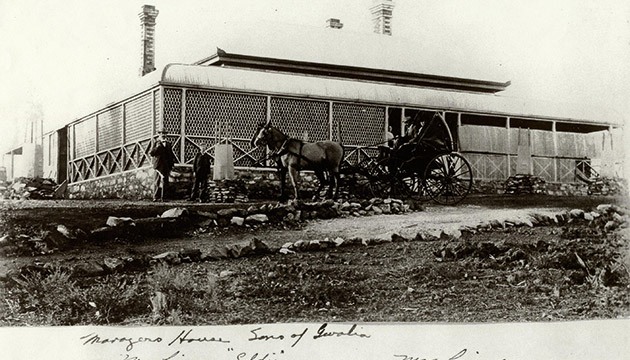A little-known town on the edge of the West Australian desert was home to a future President of the United States.
Story By Heather Zubek
There are no black-suited men standing to attention outside or flags flying atop an impressive columned façade. But the view is just as impressive, even more so, from the little house atop a hill in Leonora, 830 kilometres east of Perth. A bright young mining engineer had this little house built in 1897 during his time as mine manager for the Sons of Gwalia mine. The underground mine sat just outside his doorstep. This young engineer would go on to inhabit another impressive house just two decades later – the White House. Herbert Hoover spent the years 1897 through to 1898 in Western Australia as a mine manager, later becoming the 31st President of the United States.
Fortune hunters braved a dry and dust-blown landscape during the 1890s gold rush. The areas surrounding Kalgoorlie attracted Afghan camel dealers, prostitutes and miners from all over the world. One British mining company was making inroads into the industry and was searching for a savvy engineer to oversee operations in the tough environment. Bewick, Moreing & Co needed someone with many years’ mining experience who was at least 35 years old. Herbert Hoover had just graduated from Stanford University in geology. With only a few months’ experience as a mine scout in America’s southwest, and penniless, he sailed to London to meet with company directors. Hoover was then sent to Western Australia aboard the RMS Victoria and, as a young 22 year old (he pretended to be older), landed in Albany in May 1897 with a promise of $600 a month.
The young American had to prove himself. He travelled from Albany to Coolgardie by train and then into the desert by camel. Hoover hated the “red dust, black flies and white heat” of the country and hated the long treks on camels even more. “Long camel rides wrench every muscle in the body,” he once wrote home in a letter. He was later to comment that for the rest of his life, whenever he saw a camel, he felt seasick.
During his time on the goldfields Hoover would write home to his young cousin, Harriette Miles, describing his living conditions. “The Australian fly is much inferior, more vicious and less energetic than the American fly,” he once noted. “He always makes for one’s eyes, so we always wear nets, which keep away what little air may be stirring.”
This story excerpt is from Issue #81
Outback Magazine: Feb/Mar 2012










